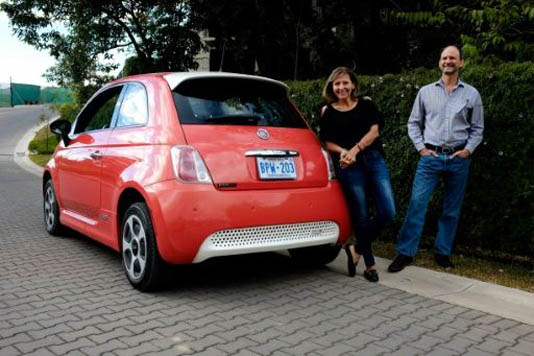SAN JOS?, April 20, 2019 (BSS/AFP) – Eric Orlich and his wife Gioconda
Rojas own two electric vehicles, which they charge at home in the garage
thanks to solar panels on their roof.
That could soon become the norm in Costa Rica, where the government
launched a decarbonization plan in February to rid the country of fossil
fuels by 2050.
“It’s totally realistic and necessary,” said Orlich, a father of two who
lives in a mountainous zone east of the capital San Jose.
A businessman in the solar panel sector and president of the Association
of Electric Mobility — which promotes electric-powered transport — what
excites him the most about the government’s plan is the focus on public
transport.
The aim is to have 70 percent of public transport powered by electricity
in 2035 — and the whole fleet by 2050.
That is an achievable goal according to diplomat Cristiana Figueres, who
in 2015 participated in talks to secure the Paris climate accord on limiting
global warming.
“The government prudently set the 2050 date because that’s what the Paris
Agreement demands but I’m confident we’ll manage it before then,” Figueres
told AFP.
“Once we’ve implemented the process of electrifying transport and
relaunched a more efficient agriculture and livestock sector, we shall see an
exponential effect on technological change” that will accelerate
decarbonization, she added.
– ‘Car no longer king’ –
Leftist President Carlos Alvarado’s plan is set to extend beyond public
transport to incorporate industry, agriculture and livestock, as well as a
reforestation program aimed at increasing woodland from 50 to 60 percent of
the country.
Further elements include modernizing waste management and a green tax
reform to replace the loss of fuel tax revenues.
“This is a change in our social dynamic and our economy,” first lady
Claudia Dobles, an architect responsible for the urban regeneration program,
told AFP.
“By 2050 our urban and rural landscape is going to look very different,
with nicer towns… where the car will no longer be king.”
With regard to transport, there are two key components: an electric train
serving the San Jose metropolitan area — the most densely populated in the
country — and modernization of the bus network.
The aim is for people to be able to easily access the bus or train by foot
or bicycle and connect to the entire public transport system — ending the
reign of the car, largely responsible for the capital’s pollution and
congestion problems.
– No congestion solution –
The plan has its critics, though, such as analyst Juan Carlos Hidalgo,
from the Washington-based Cato Institute, who says it fails to consider the
costs.
He said the plan doesn’t take into account the “principle of cost-benefit”
but only the “zero emissions goal.”
“It’s a goal without economic foundations,” he told AFP.
For his part, bicycle use activist David Gomez says the plan lacks
ambition when it comes to non-motorized transport and won’t solve San Jose’s
traffic problems.
“We need incentives so people feel motivated to leave the car behind and
use a bicycle, which is a more powerful decarbonization measure than changing
a fuel car for an electric one,” he said.
And Dobles admits the plan won’t alleviate congestion.
“The challenges of mobility and displacement will remain. It’s not because
we’ll have better technology and more intelligent systems that we’ll stop
having mobility problems,” she said.
Figueres says all countries need to decarbonize their economies in the
face of climate change, but in that regard, Costa Rica does at least has an
advantage.
Amongst wind, hydro, solar and geothermal energy, the tiny Central
American country of five million people is already only 1.5 percent off
achieving total self-sufficiency in renewable energy.



